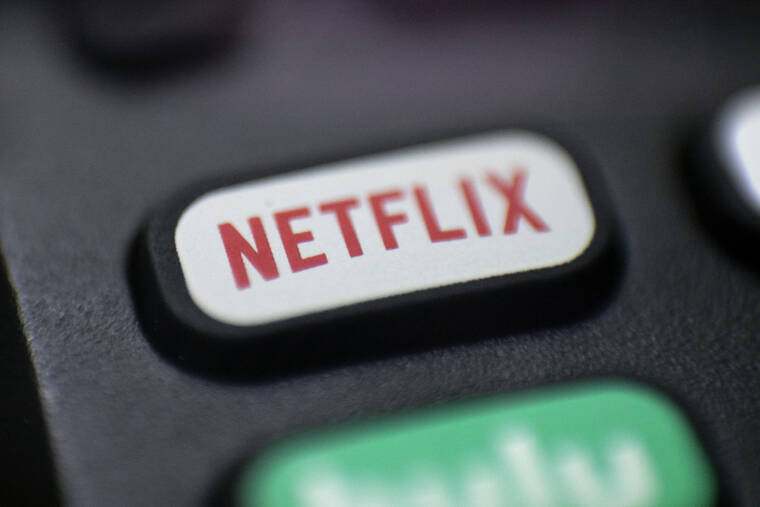Netflix shares fall 26% after losing 200,000 subscribers
SAN FRANCISCO >> Netflix suffered its first loss of subscribers in more than a decade, causing its shares to plummet 25% in extended trading amid fears the pioneering streaming service may already be past its prime.
According to the quarterly report released today, the company’s subscriber base decreased by 200,000 subscribers in the period January through March. It’s the first time Netflix’s subscribers have declined since the streaming service became available in most parts of the world outside of China six years ago. The drop this year is partly due to Netflix’s decision to pull out of Russia to protest the war in Ukraine, resulting in a loss of 700,000 subscribers.
Despite this, Netflix acknowledged that its problems run deep, forecasting another 2 million subscriber losses in the April-June period.
If the stock decline extends into Wednesday’s regular trading session, Netflix shares will have lost more than half their value so far this year — wiping out about $150 billion in shareholder wealth in less than four months.
Netflix also lost 800,000 subscribers in 2011 after it revealed plans to charge separate fees for its then-nascent streaming service, which had been bundled for free with its traditional DVD-by-mail service. Customer reaction to the move prompted an apology from Netflix CEO Reed Hastings for botching the spin-off execution.
The service also saw a drop in US subscribers in 2019.
But the latest subscriber drop was far worse than Netflix management’s forecast of a conservative gain of 2.5 million subscribers. The news deepens problems that have been mounting for streaming since a wave of sign-ups from a captive audience began to slow during the pandemic.
It’s the fourth time in the past five quarters that Netflix’s subscriber growth has fallen below last year’s gains. Now investors fear its streaming service could sink into a state of malaise fueled by increased competition from well-funded rivals like Apple and Walt Disney.
The setback follows an increase of 18.2 million subscribers in 2021, the weakest annual growth since 2016. This compares to an increase of 36 million subscribers in 2020 as people were locked at home and starved for entertainment, which Netflix did quickly and easily with its supply of original programs.
Netflix has previously forecast that it will regain its momentum, but is now beginning to acknowledge that action needs to be taken. Among other things, Netflix signaled that it is likely to crack down on the sharing of subscriber passwords that have allowed multiple households to access its service from a single account.
The Los Gatos, California-based company estimates that approximately 100 million homes worldwide watch its service for free using a friend’s or other family member’s account, including 30 million in the US and Canada. To stop the practice and get more people paying for their own accounts, Netflix said it could expand a test introduced in Chile, Peru and Costa Rica last month that allows subscribers to charge their accounts up to add two people living outside their household additional fee.
“Account sharing as a percentage of our paying membership hasn’t changed significantly over the years, but combined with the first factor, this means that in many markets it’s harder to grow membership – an issue that’s been masked by our COVID growth.” Netflix said in a letter to its shareholders today.
Netflix ended March with 221.6 million global subscribers.
As the pandemic has abated, people have found other things to do, and other video streaming services are working hard to attract new viewers with their own award-winning programming. Apple, for example, held the exclusive streaming rights to “CODA,” which eclipsed Netflix movies “Power of The Dog,” among others, and won Best Picture at last month’s Academy Awards.
Escalating inflation over the past year has also squeezed household budgets, prompting more consumers to rein in spending on non-durable goods. Despite these pressures, Netflix recently increased its prices in the US, where it has the greatest household penetration — and where it’s had the most trouble finding more subscribers. Netflix lost 640,000 subscribers in the U.S. and Canada last quarter, prompting management to indicate that most of its future growth will come from international markets.
Netflix is also trying to give people another reason to subscribe by adding video games at no extra charge – a feature it introduced last year.


Comments are closed.